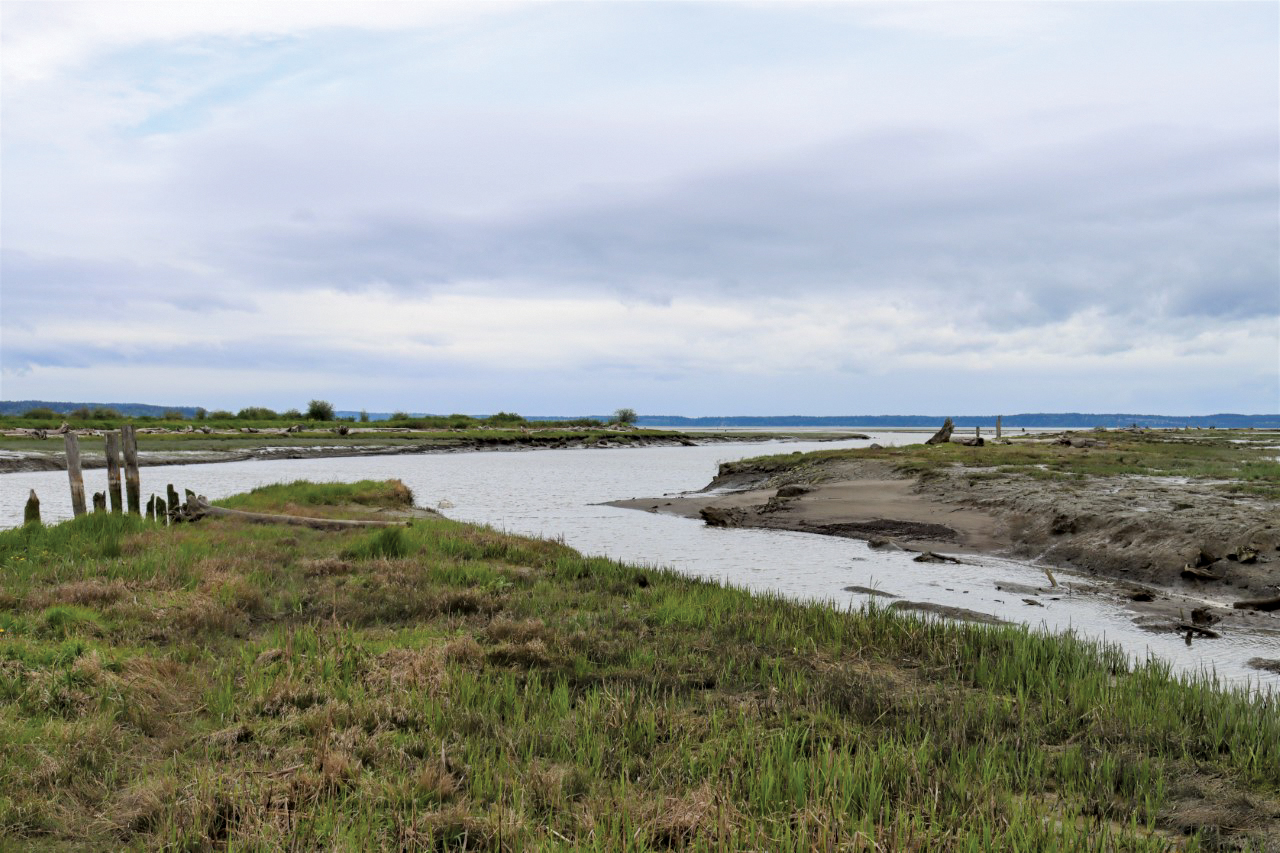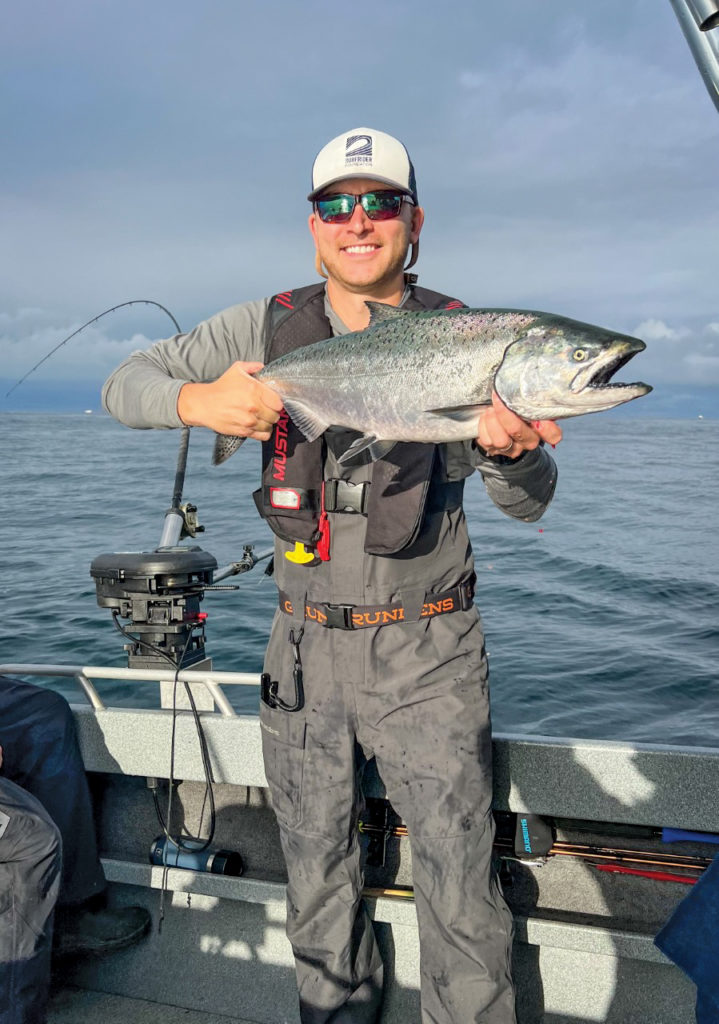Conservation on the water

By Jamie Stafford
According to a Pews Research Center report, 67% of Gen Z and 71% of millennials cite climate change as a top concern for the future, and around 57% of baby boomers say the same. Baby boomers currently represent the majority of the boating industry, but increasingly, younger generations are aging into this industry as well.
Today, consumers demand that companies match their values and show up where it counts as they become more and more discerning about where they spend their money. However, the industry is putting in effort to adapt – see how dealers and manufacturers are turning an eye towards sustainability on page 22. Things like solar arrays, other eco-friendly upgrades and the increasing popularity of EVs show that the recreational boating industry is moving in the right direction.
While companies have begun implementing sustainable action, trade organizations such as the RBFF, as well as government agencies, have been working all along to further conservation efforts.
At its heart, conservation is all about sustainable action – agencies like Washington State’s Department of Fishing and Wildlife educate the public while providing resources to those who want to enjoy the outdoors and outdoor recreation safely and eco-consciously.
I had a chance to see this work in action on a recent trip to Seattle, Wash. Take Me Fishing, a program started by the Recreational Boating and Fishing Foundation (RBFF), invited a number of freelance journalists and social media influencers out to the Pacific Northwest to learn about fishing and boating. I was lucky enough to receive an invitation to join these powerhouse women as they ventured out onto the water for a true, hands-on outdoor experience.
Along the way, we went salmon fishing and met a representative from the Washington Department of Fish and Wildlife. Chase Gunnell, the Puget Sound Region Communications Manager, was kind enough to answer a few of my questions about the important work the department is doing around wildlife conservation.
“Fishing and spending time outdoors is a really key part of our quality of life here in Washington State and it’s a key part of the mission of the Washington Department of Fish and Wildlife,” says Gunnell.
“Whether it’s salmon fishing or halibut off the coast or spending time in our inland waterways like Puget Sound or rivers like the Columbia River, we know that Washingtonians want to spend time on the water and they want to be able to go fishing and ideally bring home delicious local food. That is a challenge in a state like ours where we have a rapidly growing population, and we have very diverse stocks of different fish species. Some of those stocks may be threatened or even endangered species, while others that are produced by hatcheries or are more abundant, are able to maintain a strong fishery. The core of it is we need to balance a growing population and interest in fishing with a commitment to salmon conservation and recovery.”
Salmon is probably the first thing that a fisherman thinks of when picturing the Pacific Northwest. It proves to be a huge draw for many recreational anglers, but salmon populations have to be carefully monitored to prevent overfishing. For our trip, we were initially set to fish near the bay, but just days after the area had opened to fishers, it had reached its limit. Instead, we took a 45-minute boat ride to a different place, one of many small boats that congregated in 100- to 200-foot-deep waters. Washington is quite strict in enforcing licenses and bag limits. The state agency works with local tribal government to maintain the salmon population.
“One of the things that our department, other state and federal agencies, tribes and partners, is doing is emphasizing the need for habit restoration. The biggest constraining factor for Pacific salmon is a loss of habitat, particularly estuaries and freshwater areas. Leque Island is a great example of estuary restoration. The city of Seattle used to be a giant estuary, but we know we can’t restore that habitat, but there are places we can do that, and Leque Island is an example of a piece of property that the DFW manages and has restored to an intertidal marsh. It’s already in use by Chinook salmon, bull trout, waterfowl and other native species.”
Across the U.S., programs like the restoration at Leque Island depend on contributions from recreational fishermen—though some people might not realize the vital part they play in conservation work.
“Every time someone buys a fishing license, that license directly supports the work the state fishing and wildlife agency does,” explains Dave Chanda, CEO of the Recreational Boating & Fishing Foundation (RBFF). “In addition to that, when you renew your boat registration, when you buy tackle, when you buy motorboat fuel, there’s a tax on all of that and the money goes back to conservation work. That tax is the Sport Fishing Restoration tax fund.”
“This is what we call conservation through participation,” continues Chanda. “And it includes, but is not limited to, restoration and construction of boat ramps, fisheries management, habitat management, education programs on how to conserve our waterways and wildlife, boating and fishing access, fish surveys, and fish stocking.”
The RBFF is a nonprofit organization that aims to increase participation in recreational angling and boating. They provide support to state agencies and conduct outreach via programs like Take Me Fishing, Vamos A Pescar and Women Making Waves (unaffiliated with Boating Industry’s program of the same name).
Besides supporting each state’s local conservation efforts, RBFF currently sponsors Lake Cook in the Alexandria area in Virginia under their pilot project, Adopt a Lake. “Periodically, our team in Alexandria make their way for a half-day water clean-up, ensuring the lake is preserved clean despite its proximity to urban areas. The idea is to take this pilot project and make it a national program coordinated by RBFF,” says Chanda.
While the pilot program has thus far proven to be a success, not everything is smooth sailing. “The biggest challenge we, the RBFF, and the whole fishing and boating industry is what we call the ‘leaky bucket’. Fishing participation reached more than 50 million anglers for the second time in the last 14 years, but 14 million of those anglers left the sport last year,” Chanda says. “Retention has always been a sensitive area, but over the past two years, more and more anglers are lapsing out of the sport. Some demographics are naturally aging out from fishing. Still, other demographics are joining the sport at high rates, like women and Hispanics, but they are also dropping out.”
To address this, the RBFF is seeking demographic insight and engaging in more outreach.
“After receiving the latest 2022 Special Report on Fishing numbers, retention became the focus of our discussion with our Board of Directors (formed by executives from the fishing and boating industry, along with state fish and wildlife agencies) and it will be our main focus for the next three years. We cannot prioritize all stakeholders involved simultaneously. Still, we believe there is excellent work we can do to support retail shops to reach out to their customers more effectively so that diverse audiences can see themselves and stick to the sport and keep coming back for more.”
Diverse audiences are somewhat of a novel for the boating industry, which has long been comprised of a fairly homogeneous audience. Chanda agrees while emphasizing the need to embrace this change.
“As our country becomes more and more diverse, so too becomes fishing and boating. We as an industry need to collectively change how we approach new audiences to welcome them to the sport and make sure they stay with us. The young generations are naturally inclined to support conservation initiatives in several areas, which is a wonderful opportunity for us, as they already have the mindset needed to conserve our waterways. It is just about educating them on their impact in the sport (for example, about the benefits and reasons to get or renew a fishing license).”
This shift in mindset is starting to show within the industry as well. While it’s easy to see why the boating industry is tightly entwined with conservation, it is important to take it one step further and really start questioning where companies fit into this new era of eco-conscious consumers. It comes from a place of business acumen as well – those customers want to see that capital cares, shares their values and will step up where it matters. Beyond that, without the precious lakes and waterways that organizations are working to preserve, the recreational boating industry wouldn’t even exist.






